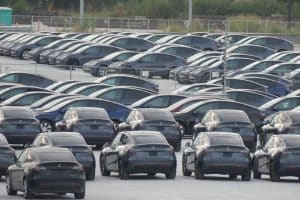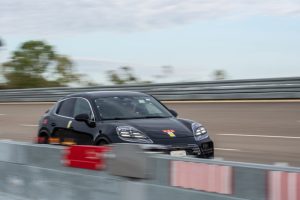In June, Tesla enabled the cabin-facing camera with the 2020.24.5 Software Update inside the Model 3 and Model Y. The company acknowledged they are developing potential safety features and enhancements. A notorious Tesla hacker, who has shown the coding for the cabin camera, has revealed what facial characteristics the feature would look for to increase safety.
The basic items that the cabin camera is searching for after discovering the software feature were revealed by Tesla hacker @greentheonly. The software defines a variety of facial expressions and head positions and appears to be searching for ways to make drivers more conscious and improve the vehicle safety.
Among the detected facial expressions are:
- BLINDED
- DARK
- EYES_CLOSED
- EYES_DOWN
- EYES_NOMINAL
- EYES_UP
- HEAD_DOWN
- HEAD_TRUNC
- LOOKING_LEFT
- LOOKING_RIGHT
- PHONE_USE
- SUNGLASSES_EYES_LIKELY_NOMINAL
- SUNGLASSES_LIKELY_EYES_DOWN
The fascinating advances from the newly revealed code suggest that Tesla will now use the cabin camera to improve safety and driver awareness. The PHONE-USE code, which would presumably identify and signify when the driver’s eyes have left the road and have instead focused on a smartphone is one of the most obvious signs of this.
Just a few days ago, the Euro NCAP tests earned Tesla a sixth-place rating on the Assisted Driving Grading Survey. The lower ratings were due to poor scores in the “Driver Engagement” metric, where the Model 3 scored only a 35 out of 100.
The lack of a driver monitoring system in the Euro NCAP tests had a major effect on the scoring of the Model 3 test. It seems that Tesla is already planning for this data to be collected by the cabin camera to improve vehicle safety.
Nevertheless, identifying any expression or facial characteristic that could be a driving distraction could be used to assess a driver’s rates with Tesla’s in-house insurance suite. For example, if PHONE-USE is observed more frequently than the average driver by the cabin camera, rates may be increased because the driver does not give the road their undivided attention.
The driver monitoring system is likely to improve driver awareness, particularly with Tesla’s self-driving and autonomous features. There is plenty of evidence that they are not used properly by many individuals who use the FSD or Autopilot features because they enable the owner to continue to place their hands on the wheel and remain aware of driving conditions.
Some owners have seen the Tesla features as an opportunity to be less responsible on the road. The company has mentioned repeatedly that the vehicles are not yet fully autonomous. Drivers are expected to continue monitoring the performance of their vehicle. The monitoring system of the cabin camera may be a critical way to remove the risk of less-than-ideal awareness when driving a Tesla.
Want to buy a Tesla Model 3, Model Y, Model S, or Model X? Feel free to use my referral code to get some free Supercharging miles with your purchase: http://ts.la/guanyu3423
You can also get a $100 discount on Tesla Solar with that code. Let’s help accelerate the advent of a sustainable future.





